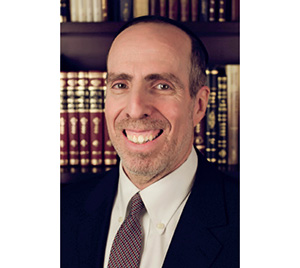
Hands down this is my favorite Sephardic Purim practice. But first a little background.
As is well known, the Rama (Orach Chaim 690:17) records that when Megillat Esther is read in public on Purim, it is customary for the congregation to recite aloud four pesukim of geulah (2:5, 8:15, 8:16, 10:3), which are then repeated by the reader. Although the practice of the kehal reading aloud certain pesukim from the Tanach is not mentioned in the Gemara, it is mentioned in prominent sources from the Geonic era—in both the siddur of Rav Saadia Gaon and Rav Amram Gaon.
We should note that Rav Yosef Dov Soloveitchik stated (in a shiur delivered at Yeshiva University in 1985) that even though a practice is not recorded in the Gemara it does not mean it was not practiced during the time of the Gemara. The Geonim may have simply recorded an ancient practice that was followed during the time of the Gemara which for some reason was not actually recorded in the Gemara.
Sephardic synagogues follow the practice of the Ben Ish Chai and Yalkut Yosef to read an additional pasuk aloud. This pasuk is Perek 6, Pasuk 1, “Balayla hahu nadeda shenat hamelech,” on that night the king could not sleep and ordered his book of records be brought before him. This is the beloved minhag to which I refer. Although the minhag to read this pasuk is not mentioned in the Geonim or Rishonim, it is nevertheless a most powerful custom.
I recall how I was struck by the poignancy of this tradition when I encountered it at Congregation Shaarei Orah, the Sephardic Congregation of Teaneck, for the first time. Of course, this practice reflects the interpretation of the Gemara (Megillah 15b) that the king who could not sleep refers not only to Achashverosh but, more importantly, to Hashem!
Indeed, this pasuk constitutes the turning point of Megillat Esther. Before this pasuk, Haman was riding high and encountered no significant resistance to his plan to (heaven forfend) exterminate the Jewish people. However, the King/king not being able to sleep was the first in a string of events that led to Haman’s defeat and demise. It was at this point that we begin to discern divine intervention on our behalf to save us from Haman’s evil decree.
A crucial goal of megilla reading is to discern Hashem’s subtle role in saving the Jews from Haman. Interestingly, the Gemara (Megilla 14a) describes the megilla reading as a form of Hallel. Of course, the megillah is not a direct praise of Hashem, especially since His holy name is not mentioned in the megilla. It is, though, a subtle praise of Hashem that the reader is challenged to notice.
Reading aloud the pasuk “Balayla hahu nadeda shenat hamelech” is certainly a most effective way of noticing and announcing Hashem’s subtle hand manipulating the events that unfolded in the megilla. By reading this pasuk aloud it is as if we are announcing the celebrated pasuk in Shir Hashirim (2:9) “Hinei zeh omed achar kotleinu mashgiach min hachalonot meitzitz min haharakim,” behold here He is standing behind the wall, watching from the windows, peering through the latticework.
I have heard it suggested that it is for this reason the Rambam requires us to have kavana (intent) for the mitzvah of megilla reading, even though for other mitzvot, such as eating matzah, he does not necessarily make such a demand. This fits with the Rambam citing the megilla serving as a Hallel as the reason for why we do not recite Hallel on Purim. In order to transform and elevate the megillah reading into a Hallel, we must have kavana.
It is interesting that we recite the bracha of She’asa nisim lavoteinu, who made miracles on behalf of our ancestors, on both Chanukah and Purim. It is understandable that we recite this bracha on Chanukah when an obvious miracle occurred (the oil for the menorah lasting for eight days when there was only sufficient oil for one day).
On Purim, though, what miracle occurred? The answer is that the megillah is replete with subtle miracles. We simply need to be alert to notice them. By our reciting She’asa Nisim before reading the megilla we are declaring that hidden miracles abound in Megillat Esther. The Sephardic practice of reading “balayla hahu nededa shenat hamelech” also goes a very long way to highlight and alert us to the hidden role of Hashem in the megilla.
May we all use our Jewish eyes and Jewish hearts to notice Hashem in the megilla and thereby come to recognize how His presence permeates each and every one of our days.
By Rabbi Haim Jachter
Rabbi Haim Jachter is the spiritual leader of Congregation Shaarei Orah, the Sephardic Congregation of Teaneck. He also serves as a rebbe at Torah Academy of Bergen County and a dayan on the Beth Din of Elizabeth.













